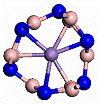Department of Physics and Astronomy: Publications and Other Research

Stephen Ducharme Publications
Document Type
Article
Date of this Version
1983
Abstract
Thermal propagation and stable hot spots (normal domains) are studied in various high Tc superconducting films (Nb3Sn, Nb, NbN and Nb3Ge). The prediction of the thermal propagation velocity of the long-standing model of Broom and Rhoderick (1960) is verified quantitatively in the regime of its validity. A new energy balance model is shown to give reasonable quantitative agreement of the dependence of the propagation velocity on the length of short normal domains. The steady state (zero velocity) measurements indicate the existence of two distinct situations for films on high thermal conductivity (sapphire) substrates. For low power per unit area the film and substrate have the same temperature, and the thermal properties of the substrate dominate. However, for higher power densities in short hot spots, the coupling is relatively weak and the thermal properties of the film alone are important. Here a connection is made between the critical current stability of superconducting films and a critical hot spot size for thermal propagation. As a result efficient heat removal is shown to dominate the stabilisation of superconducting films. These models are used to explain quantitatively self-healing of hot spots and a curious switching phenomena in a superconducting film in which a hot spot grows and collapses repeatedly over a very narrow range of current. Finally there is a discussion of the potential use of the thermal propagation model in applications of superconductors, especially switches.

